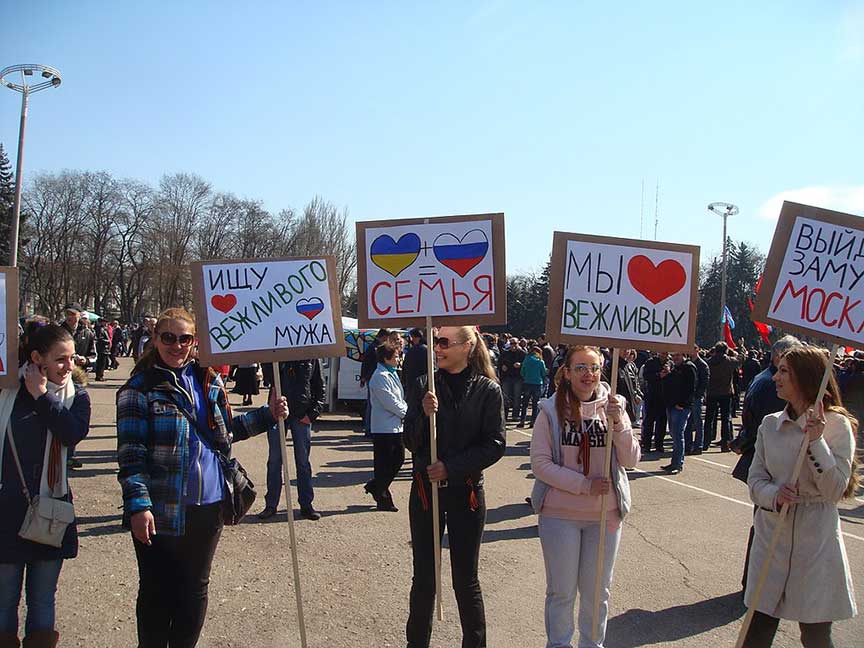Russia Seizes Crimea From Ukraine

Pro Russian Demonstrators in Crimea
On March 21, 2014 Crimea became part of the Russian State. This occurred after Russian special forces had seized the Crimean parliament and forced it have a referendum on Crimean Independence.
Crimea became part of the Russian Empire in 1783. When the Soviet Union was established, Crimea became part of the Russian Soviet Republic. In 1954 Crimea was transferred to the Ukrainian SSR to commemorate 300 years since Russia conquered Ukraine.
With the breakup of the Soviet Union, Ukraine became an independent country. However, the government of Ukraine stayed closely aligned to Russia both economically and diplomatically. In 1994 after signing the Budapest Memorandum on Security Assistance, Ukraine gave up the nuclear weapons in Ukraine in return for security guarantees. Russian-Ukrainian relations were generally good in the following years, although disputes over Energy sometimes complicated that relationship. The Russians also accused the Ukrainians of helping the Georgian in the Russian Georgian War. In 2010 Viktor Yanukovych became President of Ukraine. He acceded to many Russian demands and was considered the most pro of all Ukrainian Presidents. In 2013 Ukraine pursued a dual path: gaining observer status in the Russian-led Custom union and seeking associated membership in the European Union. On August 14, 2013, the Russian Customs Union stopped receiving goods from Ukraine and demanded that Ukraine not sign a trade deal with the EU. On November 21, 2013, Yanukovych canceled discussions to reach an agreement with the EU in order to concentrate on closer ties with Russia.
The Ukrainian people revolted, and millions took to the street. They forced Yanukovych from power in February 2014.
In response to the ouster of the Russian ally, Soviet President Vladimir Putin remarked that it was time to return Crimea to Russia. Russia organized pro-Russian demonstrations in Crimea. When counter-demonstration broke out, calling Crimea part of Ukraine, the Russians dispatched special forces which seized the Crimean Parliament on February 27, 2014. The parliament then voted to replace the current Prime Minister Anatolii Mohyliov with Sergey Aksyonov, who headed the Russian Unity Party, which had received 4% of the vote in the previous election. The new government then organized a sham referendum whose results were announced on March 17, 2014: no surprise, Crimea wanted independence from Ukraine. Putin recognized the independent Crimea that same day, and four days later, on March 21, Crimea became part of Russia.
At the same time, the Russians were organizing pro demonstrations in the Dumbas areas of Eastern Ukraine. It was an area that was more heavily ethnic Russian than the rest of Ukraine. The demonstrators seized territory and were supported with volunteers and material from Russia. As a result, the Ukrainian government launched an attack to suppress the rebels and regain much of the region. By August 2014, they had started to gain control of the Ukrainian Russian border in the area. Russia then sent in Russian regular troops, which pushed back the Ukrainian army, to lines agreed to in the Minsk Protocol on September 5, 2014. Since then, a war of attrition has gone on between the Ukrainian military and the Russian-supported rebels along the ceasefire lines.
 >
>